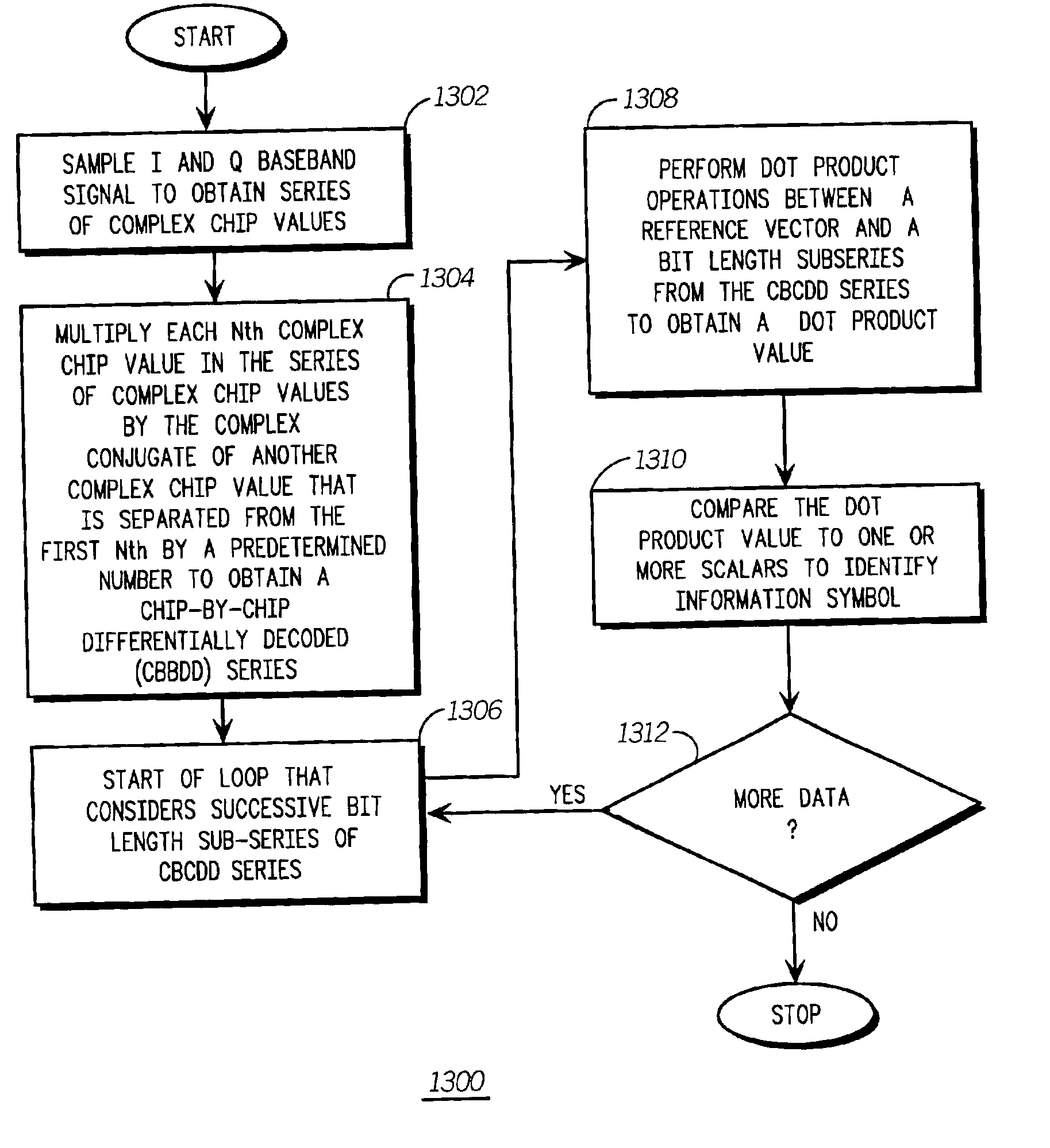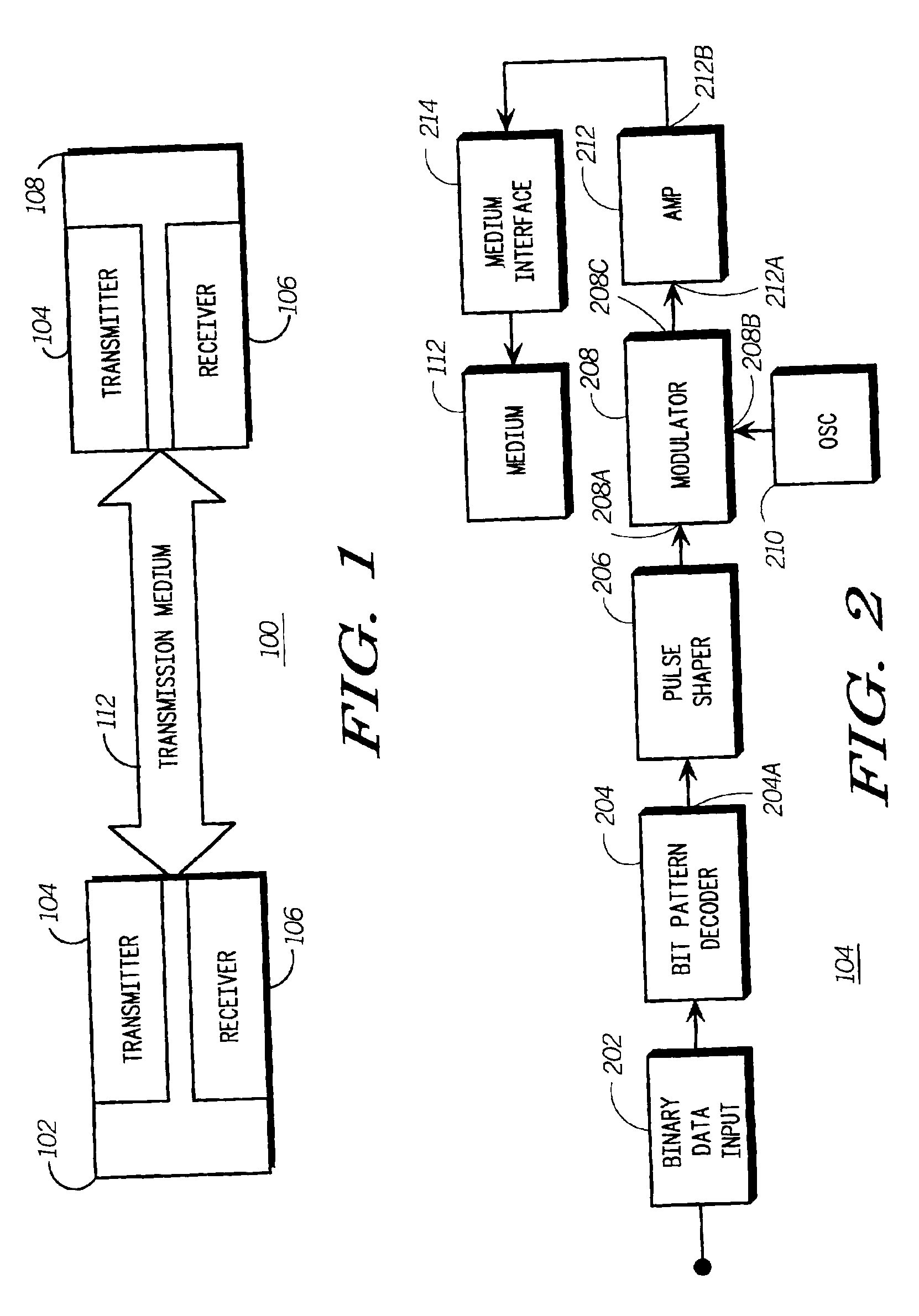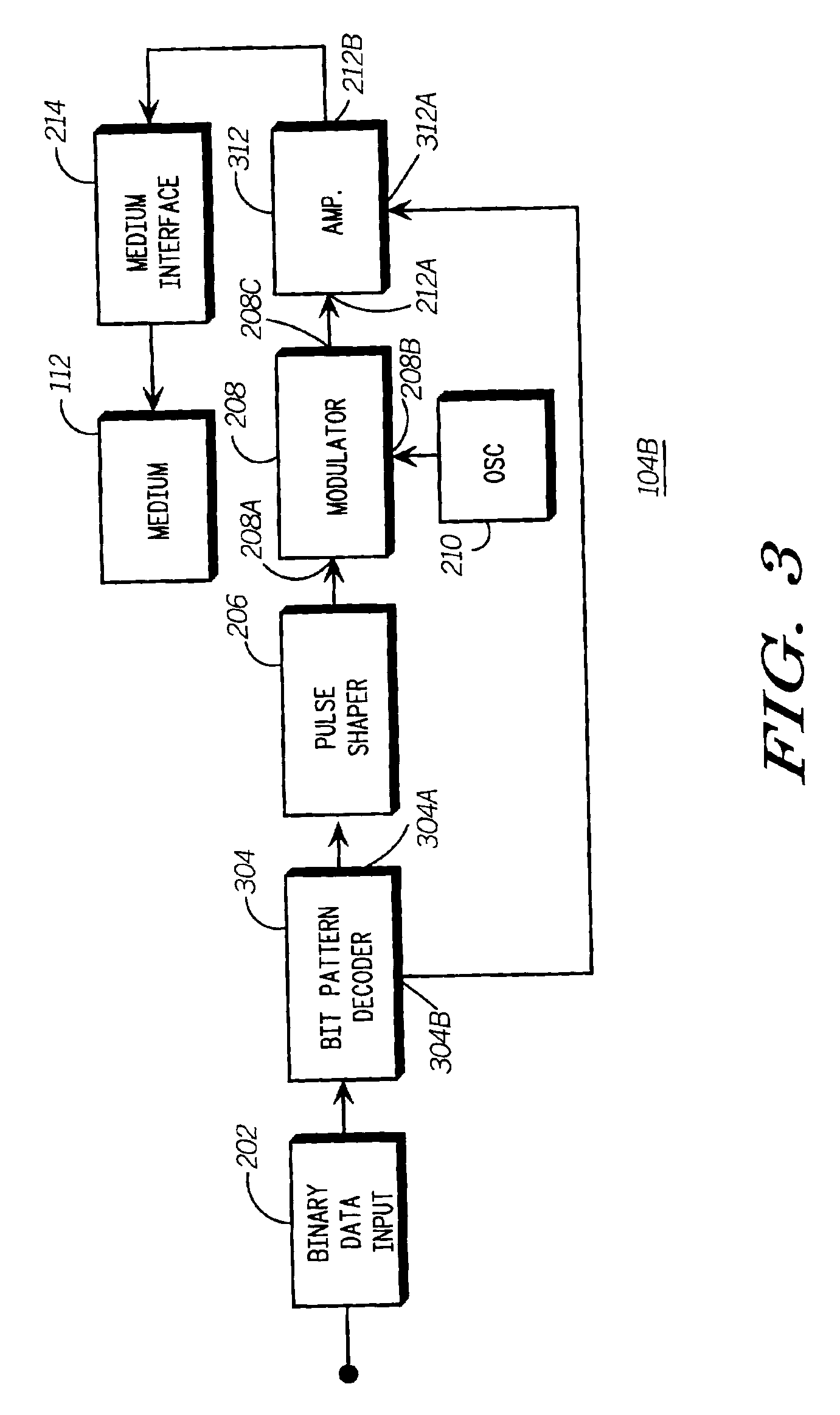System for code division multi-access communication
a multi-access communication and code technology, applied in the direction of synchronisation signal speed/phase control, amplitude demodulation, instruments, etc., can solve the problem of frequency drift, slow rotation of complex chip values within a bit, and the signal-to-noise ratio obtained in ds-cdma communications
- Summary
- Abstract
- Description
- Claims
- Application Information
AI Technical Summary
Benefits of technology
Problems solved by technology
Method used
Image
Examples
Embodiment Construction
While this invention is susceptible of embodiment in many different forms, there are shown in the drawings and will herein be described in detail specific embodiments, with the understanding that the present disclosure is to be considered as an example of the principles of the invention and not intended to limit the invention to the specific embodiments shown and described. Further, the terms and words used herein are not to be considered limiting, but rather merely descriptive. In the description below, like reference numbers are used to describe the same, similar, or corresponding parts in the several views of the drawings.
According to preferred embodiments of the present invention, signaling methods, apparatuses, and software are provided for communicating by modulating a carrier signal with DS-CDMA codes at a transmitter, demodulating the signal to obtain a sequence of complex chip values at a receiver, multiplying each complex chip value by another complex chip value displaced ...
PUM
 Login to View More
Login to View More Abstract
Description
Claims
Application Information
 Login to View More
Login to View More - R&D
- Intellectual Property
- Life Sciences
- Materials
- Tech Scout
- Unparalleled Data Quality
- Higher Quality Content
- 60% Fewer Hallucinations
Browse by: Latest US Patents, China's latest patents, Technical Efficacy Thesaurus, Application Domain, Technology Topic, Popular Technical Reports.
© 2025 PatSnap. All rights reserved.Legal|Privacy policy|Modern Slavery Act Transparency Statement|Sitemap|About US| Contact US: help@patsnap.com



